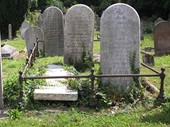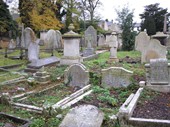The growth of Cambridge
To the north of the river, Cambridge spread only to a small area around Castle Hill within the parishes of St Peter and St Giles, which had been part of the town since medieval times. Once at the County Gaol at the top of the hill, open fields with scattered farms spread across to the neighbouring villages of Girton, Impington and Chesterton. In fact the manor (and parish) of Chesterton extended from what is known as Old Chesterton almost up to Castle Hill and across to the turnpike road to Huntingdon. Since medieval times this land had been cultivated for the growing of corn.
In 1835, the land of the Manor of Chesterton was enclosed by Act of Parliament. The consequence of this was that substantial areas became the property of a small number of wealthy individuals who could now sell plots for development.
The population of Cambridge was growing rapidly and the bustling commercial centre was becoming increasingly overcrowded as new residents sought dwellings. Among the problems raised by this overcrowding was the lack of burial space. By 1840 the Town Council had identified the need for two new cemeteries to serve both the Nonconformist community and the established parishes whose burial places were full. These we now know as Histon Road Cemetery and Mill Road Cemetery.



